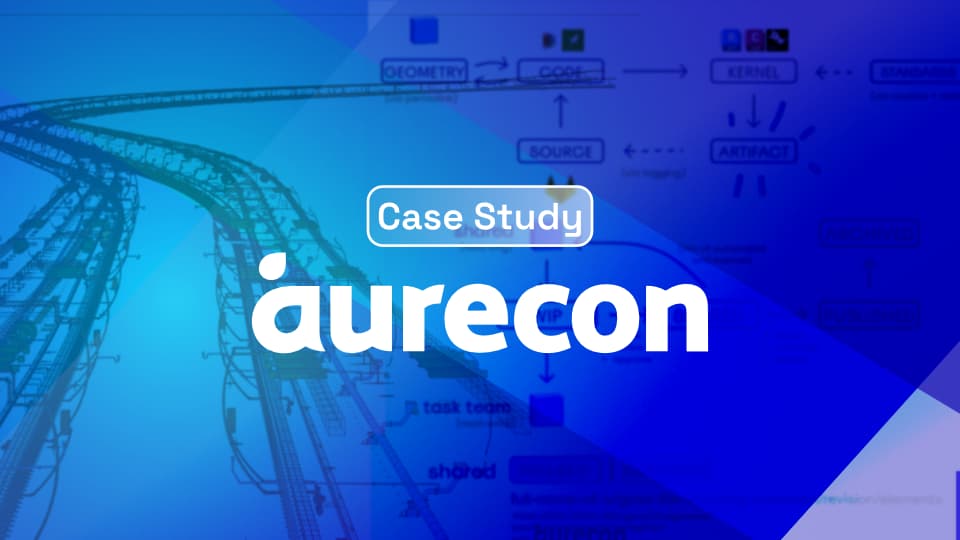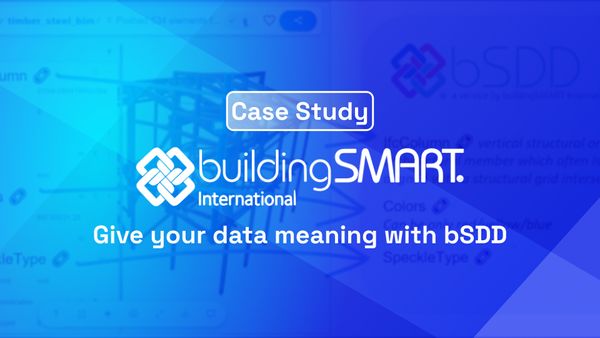Introducing Aurecon
Aurecon is a leading global engineering consultancy with 6,500 experts, spanning areas from the built environment, rail, transit, to Information Management (IM).
In 2017, Aurecon embraced Virtual Reality (VR) and Augmented Reality (AR), integrating Speckle into their workflow. Teams used AR to modify a sandbox (i.e. an isolated testing environment that enables users to run programmes or open files without affecting the application), which then interfaced with Speckle and the Unreal Engine for real-time updates. Aurecon's on-premise server supported these innovative experiments.

Central to Aurecon's IM strategy with GitLab was streamlining code management. They prioritised standardising coding practices by emphasising techniques like branching and merging. While Speckle remained a key tool, its focus shifted from geometric storage to a complementary programming role, marking it as an experimental feature in their approach.
Papakura to Drury: Landing a Plane with Speckle
This infrastructure project in Auckland, New Zealand's largest city, focuses on enhancing short-term capacity and ensuring long-term growth in the southern region. Key improvements include adding an extra traffic lane in each direction, interchange enhancements, dedicated walking and cycling paths, and local road upgrades. Led by the New Zealand Transport Agency as part of the national upgrade program, the initiative boosts community access to employment, schools, and recreational activities while optimising traffic flow.

A culture of continuous improvement drives the project, particularly in digital methods. Aleisha and Louise, computational designers at Aurecon, devised a workflow to expedite the design process of retaining walls led by the engineering team. Their innovative approach allowed for a clearer understanding of spatial impacts and outcomes. The result was a reusable computational design workflow adaptable to significant design changes.
Challenges Faced: Geotechnical Work

Geotechnical work in New Zealand, marked by seismic complexities and environmental concerns, often results in design alterations. Previous project stages relied solely on 2D collaborations between engineers and drafters. Recognising the intricacies of upcoming complex walls, the team transitioned to computational design at the 50% design stage. Using tools like Rhino for 3D modeling and Grasshopper for computational workflows, they streamlined processes, ensuring optimal design documentation through Civil3D. Integration within Bentley's ProjectWise system facilitated organised storage and management of asset information.
While ProjectWise integrates with major design software, it does not support Rhino. Consequently, the team had to export geometry from Rhino and import it into Civil3D via SharePoint. Despite this hurdle, the foundation laid by the 50% design workflow enabled the team to construct a more robust and resilient workflow capable of managing the project's complexities and detailed design phases effectively. This is where the team faced two main challenges:
- Geometry: the design will change, and the level of data will increase
Initially, the design approach prioritised simplicity. However, the workflow required refinement as designs evolved and grew in complexity. While they began with basic geometry, the increasing intricacies, especially concerning the 12 retaining walls, made their manual transition from Rhino to Civil3D inefficient. The unique design requirements of each wall were tackled with Grasshopper scripts, highlighting the need for adaptability to address significant design alterations. - Information Management (IM): storing and accessing the geometry
Managing geometry and metadata posed challenges. Balancing computational design workflows with structured IM standards became crucial for the team. Given the frequent design changes for each wall, they recognised the need for a robust versioning system. They required a system that could swiftly revert changes if decisions were reversed. Additionally, aligning their workflows with ISO 19650 standards consistently emerged as a consideration. While they addressed these challenges as they arose, they understood the need to formulate a comprehensive strategy for seamless integration moving forward.
These two challenges were significant influencing factors in the team’s decision to move away from SharePoint and consider a different way of working as soon as the outputs became more complicated. This is where Speckle came in.

The Solution: Speckle as a Geometry Repository
Using Speckle as a geometry repository presented straightforward functionality, but structuring it effectively for the project proved challenging. Rather than storing complete drawings, the approach involved storing components tailored to their code workflows.
Conceptualising geometry as a hierarchy—comprising individual asset components linked to an asset within a design package—provided clarity. To ensure traceability, each commit was labeled with essential details like date, time, and related hierarchy names, ensuring recoverability and historical reference. Throughout this project, Aleisha tested three strategies for structuring her streams and branches with Speckle:
- Strategy One: A single stream for the project with sub-branches per package proved cluttered and occasionally led to naming inconsistencies.
- Strategy Two: Adopting one stream per package enhanced clarity but maintained data direction challenges.
- Strategy Three: Simplifying with categorised branches based on geometry types introduced manual commit selection issues.
Despite complexities, successful deliveries showcased computational design's potential and strengthened Aurecon’s team relationships.
Watch Aleisha demo this at SpeckleCon:
Rolling Out Speckle at Scale
Previously, the team had experimented with Speckle on a server. When it came to rolling Speckle out for the enterprise, they ensured it was fully procured and maintained through dedicated IT processes, ensuring its resilience amidst team changes. This investment aligned with their future budget considerations. A thorough security review was conducted, leading to the establishment of both production and test environments. The team's focus remained on smaller, standalone projects within the organisation.

The results: improved data management, real-time support with answering complex questions about where things are being stored, data security, data access…
::: tip
"The script for managing movement between Rhino and Revit went from 885 components down to 16 and can be used by someone in the broader network rather than a specific code personnel," says a Senior Computational Designer at Aurecon.
:::
Using Speckle at Aurecon
After implementing Speckle in the business, the focus shifted to its application. Therefore, involvement in a major project, structured under the ISO 19650 standard, highlighted segmented task teams with no inter-team sharing. This necessitates that Computational Design remains in work-in-progress (WIP) spaces, with essential mechanisms for integrating approved information into these areas.

Regarding Speckle's functionality, the goal was to distinguish between a shared stream and a task team WIP space with read-write capabilities. Essentially, the objective is to transform static file-based data into a versatile database usable across various products. This process involves disaggregating data for practical application. While our structure was straightforward, it necessitated meticulous information management and team coordination.

The team focused on the following components when it comes to IM:

Which led to the following pattern:

The geometry can be pulled while artifacts leverage code and kernels - with strong reliance on good standards and read mes. Here’s an example of that in Fork which is the Git front end that Aurecon uses:

This approach led to stronger standards and better familiarity with Speckle and Git. Feedback from Project Managers has been positive and encouraging, although there’s still room to maintain consistent environments and plugins.
Overall, looking ahead, Aurecon wants to ensure they can set up all these things automatically and work with the visualisation team to leverage the data available on their server.
::: tip
"It’s removing a lot of barriers around how I can work with engineers within their software and the software I'm most comfortable in,w so that we can both produce the best outputs," says Aleisha.
:::
The Future of Aurecon with Speckle
Aurecon's collaboration with Speckle underscores the transformative potential of computational design within infrastructure projects. Through innovative workflows, strategic Speckle integration, and unwavering commitment, Aurecon has paved the way for enhanced efficiency, collaboration, and project success.
::: tip
"We're only just getting started I think with what we can do, and more and more people within the business are starting to take notice, which is really exciting!" says Chris Welch.
:::
You can subscribe to our newsletter for more content like this:



